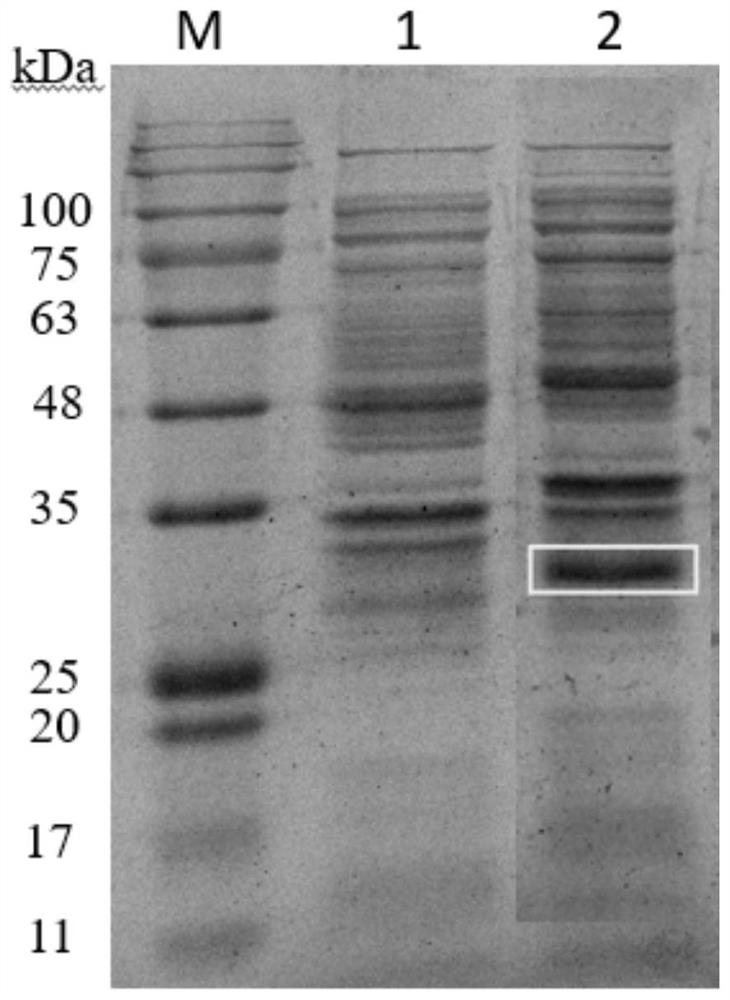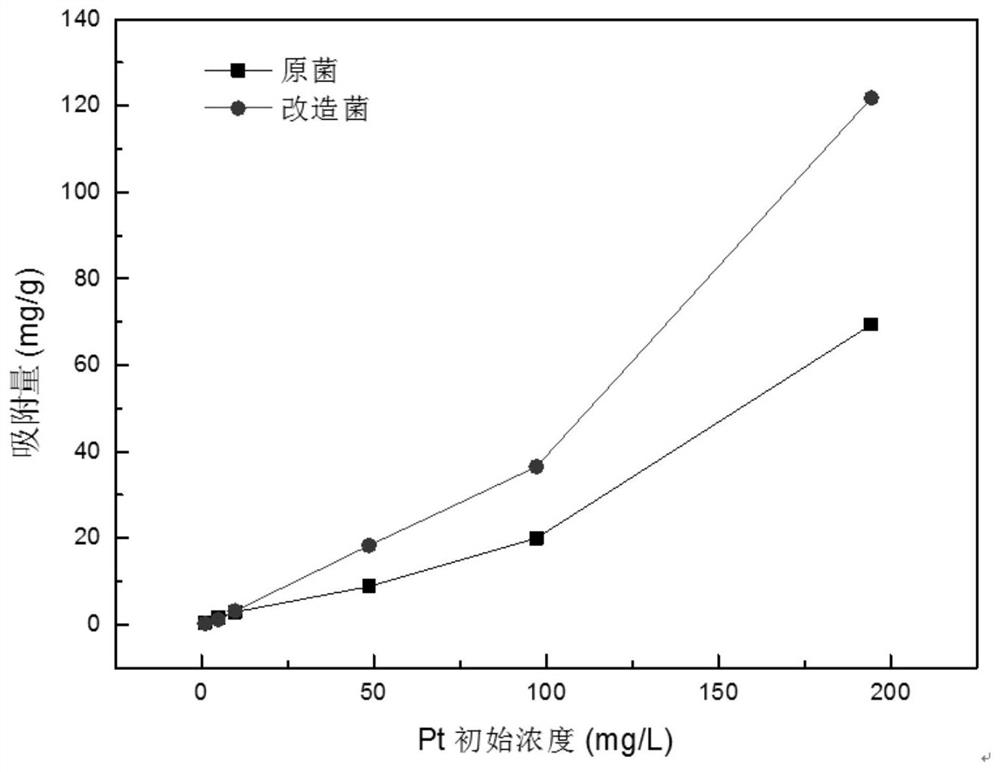A surface-displayed metal-binding protein gene and its application in recycling platinum and palladium metal
A technology for metal-binding proteins and surface display, which is applied to the surface display of metal-binding protein genes and its application in the recovery of platinum and palladium metals, can solve the problems of poor adsorption and poor selectivity of platinum group metals, and achieve low cost and low cost. , no secondary pollution effect
- Summary
- Abstract
- Description
- Claims
- Application Information
AI Technical Summary
Problems solved by technology
Method used
Image
Examples
Embodiment 1
[0025] (1) Synthesis of protein and metal binding protein genes
[0026] The gene sequences of the anchor protein (InaKN) and the metal binding protein (EC20) were sent to a biological company for synthesis and optimization, making them suitable for expression in Escherichia coli. The synthetic gene sequence was connected to the pET28a(+) plasmid, in which the InaKN sequence was inserted between the Nco I and Hind III restriction sites, and the EC20 sequence was inserted between the NotI and XhoI restriction sites to obtain the recombinant plasmid pET28a(+)- InaKN-EC20, which contains the nucleotide sequence shown in SEQ ID NO.3.
[0027] (2) Transform E.coli BL21 Competent Cells with Recombinant Plasmid
[0028] ①Put 100 μL of E.coli BL 21 competent cells into a centrifuge tube, then put the centrifuge tube in an ice bath, then add 10 μL of recombinant plasmid pET28a(+)-InaKN-EC20 to the centrifuge tube, flick and mix well, Put it in an ice bath and let it stand for 30min. ...
Embodiment 2
[0046] In this embodiment, the palladium (Pd) metal solution used has a concentration of 0.5, 2.5, 5, 25, 50, 100, and 200 mg / L, and the adsorption pH is 3.0. The specific operation steps of the experiment are as follows (combined with figure 1 ):
[0047] (1) The preparation of microbial adsorbent, concrete steps are:
[0048] The E.coli BL21 original bacteria were inoculated into sterilized LB medium, cultured at 30°C and 170rpm for 24h, and then centrifuged at 10000rpm for 10min to collect the bacteria. The E.coli BL21 engineering bacteria prepared in Example 1 were inoculated into the HB-PET self-inducing medium, cultured at 30° C. and 170 rpm for 24 hours, and then centrifuged at 10,000 rpm for 10 minutes to collect the bacteria. Among them, the self-inducing medium was purchased from Qingdao Hi-Tech Park Haibo Biotechnology Co., Ltd., and 1 L of the medium contained 27.5 g of culture powder and 5 g of glycerol.
[0049] (2) The preparation of Pd (II) stock solution, c...
Embodiment 3
[0055] In this embodiment, the platinum (Pt) metal solution used has a concentration of 1, 5, 10, 50, 100, and 200 mg / L, and the adsorption pH is 3.0. The specific operation steps of the experiment are as follows:
[0056] (1) The preparation of microbial adsorbent, concrete steps are:
[0057] The E.coli BL21 original bacteria were inoculated into sterilized LB medium, cultured at 30°C and 170rpm for 24h, and then centrifuged at 10000rpm for 10min to collect the bacteria. Inoculate the E. coli BL21 engineered bacteria prepared in Example 1 into HB-PET self-inducing medium, culture at 30° C. and 170 rpm for 24 hours, and then centrifuge at 10,000 rpm for 10 minutes to collect the bacteria. Among them, the self-inducing medium was purchased from Qingdao Hi-Tech Park Haibo Biotechnology Co., Ltd., and 1 L of the medium contained 27.5 g of culture powder and 5 g of glycerol.
[0058] (2) The preparation of Pt(II) stock solution, concrete steps are:
[0059] 0.864g PtCl 2 Diss...
PUM
| Property | Measurement | Unit |
|---|---|---|
| adsorption capacity | aaaaa | aaaaa |
| adsorption capacity | aaaaa | aaaaa |
| concentration | aaaaa | aaaaa |
Abstract
Description
Claims
Application Information
 Login to View More
Login to View More - R&D
- Intellectual Property
- Life Sciences
- Materials
- Tech Scout
- Unparalleled Data Quality
- Higher Quality Content
- 60% Fewer Hallucinations
Browse by: Latest US Patents, China's latest patents, Technical Efficacy Thesaurus, Application Domain, Technology Topic, Popular Technical Reports.
© 2025 PatSnap. All rights reserved.Legal|Privacy policy|Modern Slavery Act Transparency Statement|Sitemap|About US| Contact US: help@patsnap.com



